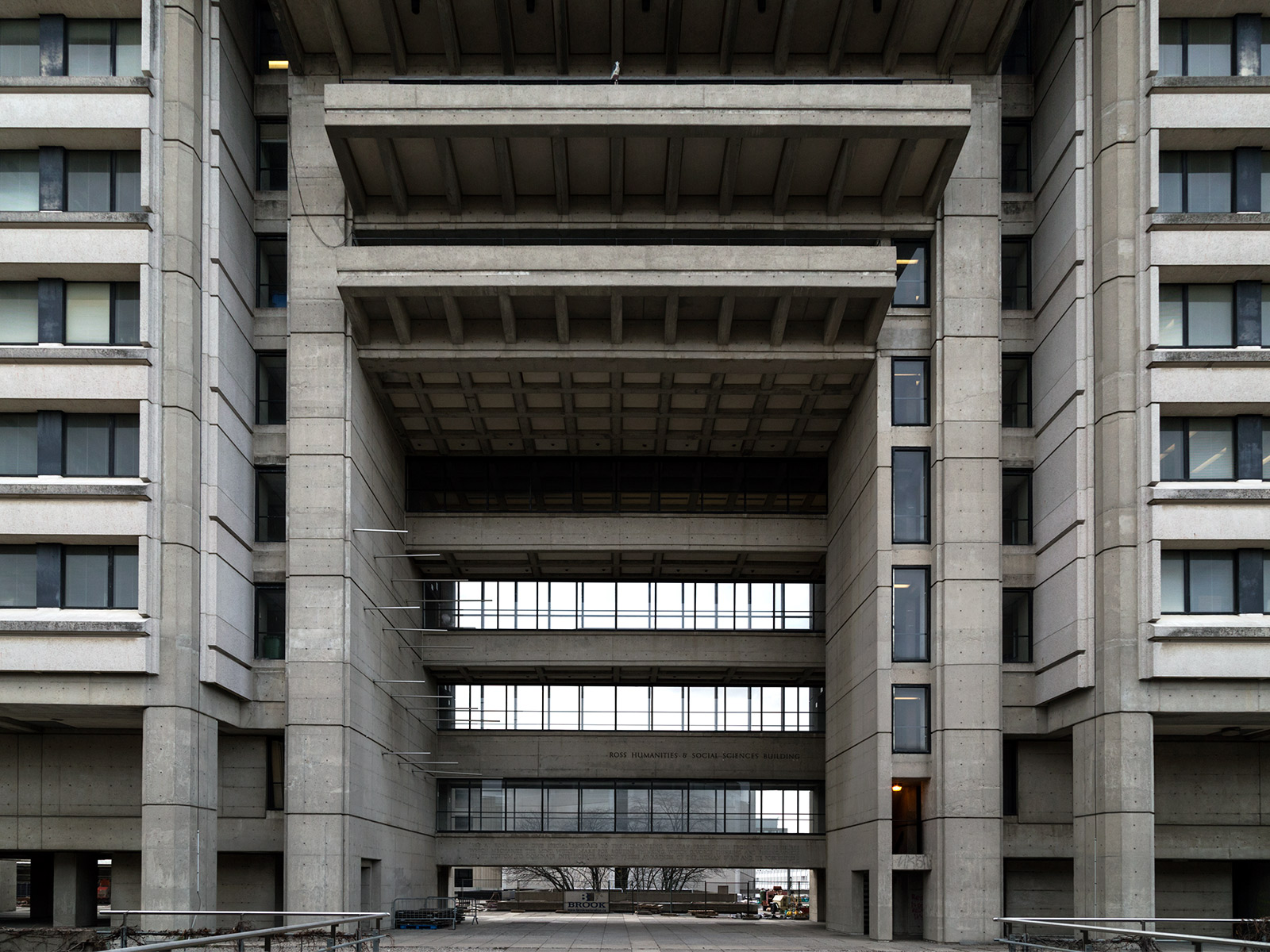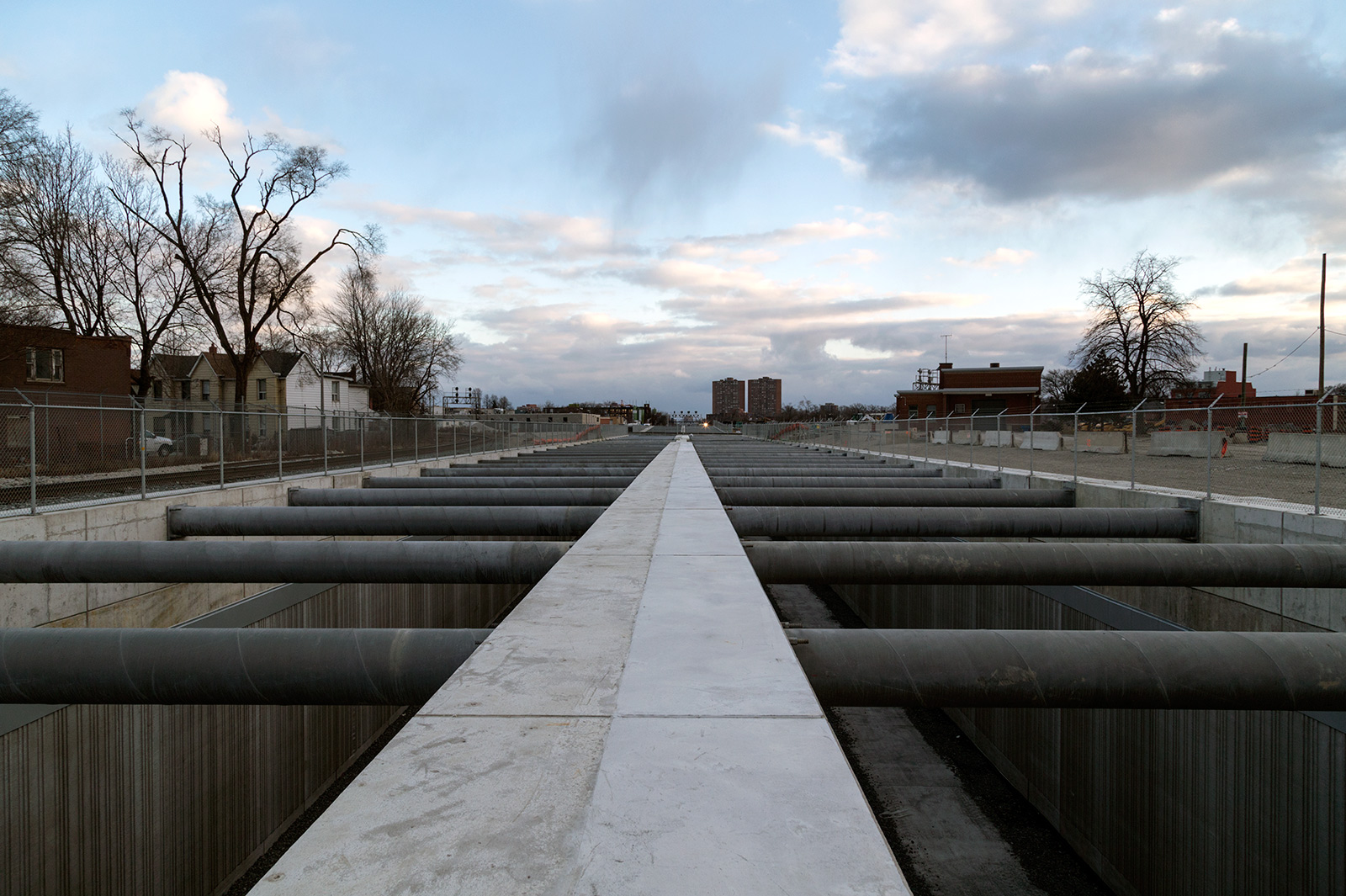 Now that trains no longer need to wait to cross the junction, GO Transit regional commuter trains as well as the soon to be implemented Union Station – Pearson International Airport Express train will run faster with more efficient scheduling.
Now that trains no longer need to wait to cross the junction, GO Transit regional commuter trains as well as the soon to be implemented Union Station – Pearson International Airport Express train will run faster with more efficient scheduling.
Monthly Archives: December 2014
20141230. Demolition of these landmark silos (c.1893) has commenced in Toronto’s Junction neighbourhood.
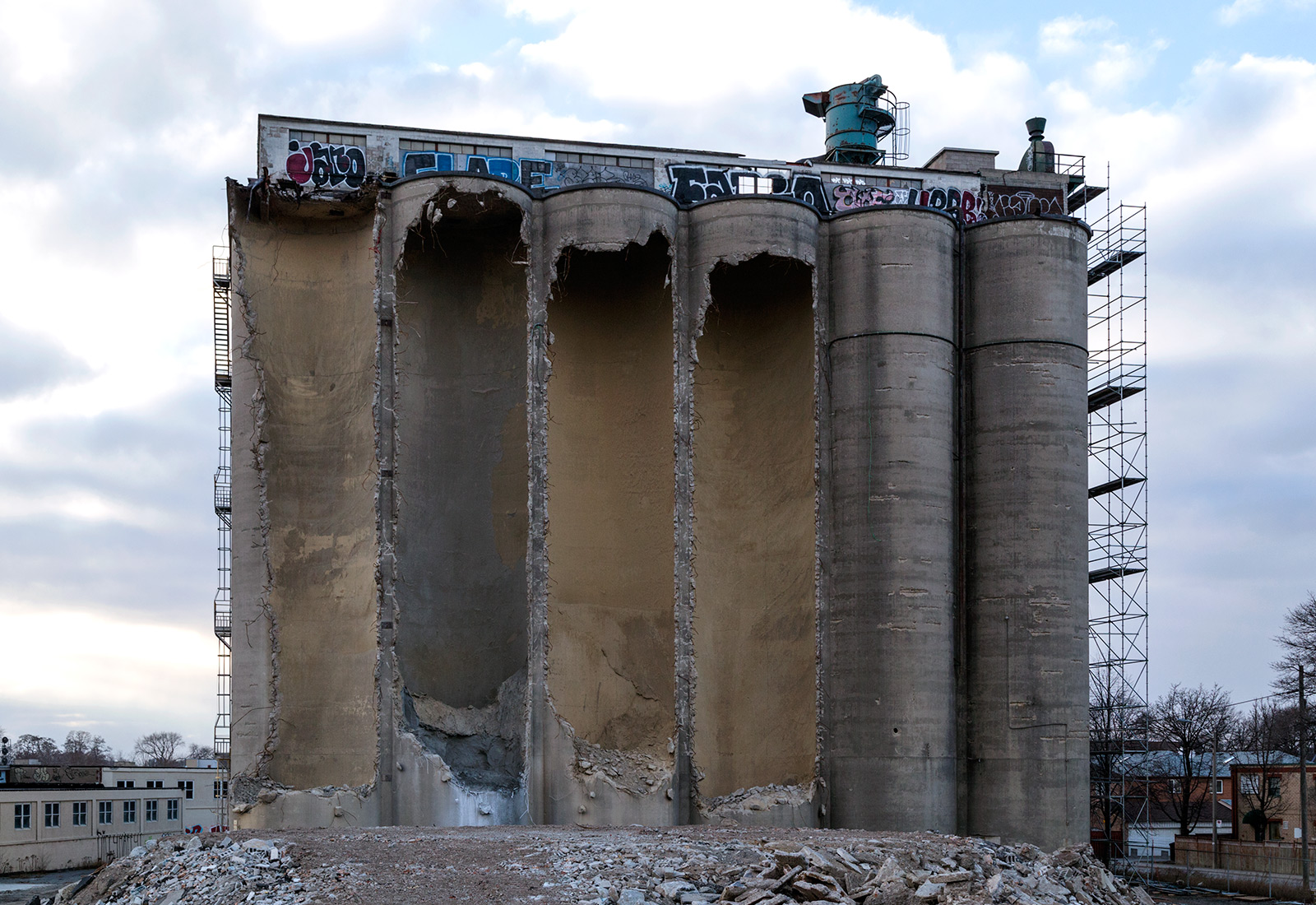 These silos have a long history. Once they were the Campbell Flour Mills and were most recently owned by St. Marys Cement. There is talk about the site being used for a “suburban style plaza with surface parking” probably not unlike the Stockyards Mall recently completed nearby.
These silos have a long history. Once they were the Campbell Flour Mills and were most recently owned by St. Marys Cement. There is talk about the site being used for a “suburban style plaza with surface parking” probably not unlike the Stockyards Mall recently completed nearby.
20141229. The remaining Inn on the Park building (c.1971) at Eglinton and Leslie in Toronto stands in a half demolished state.
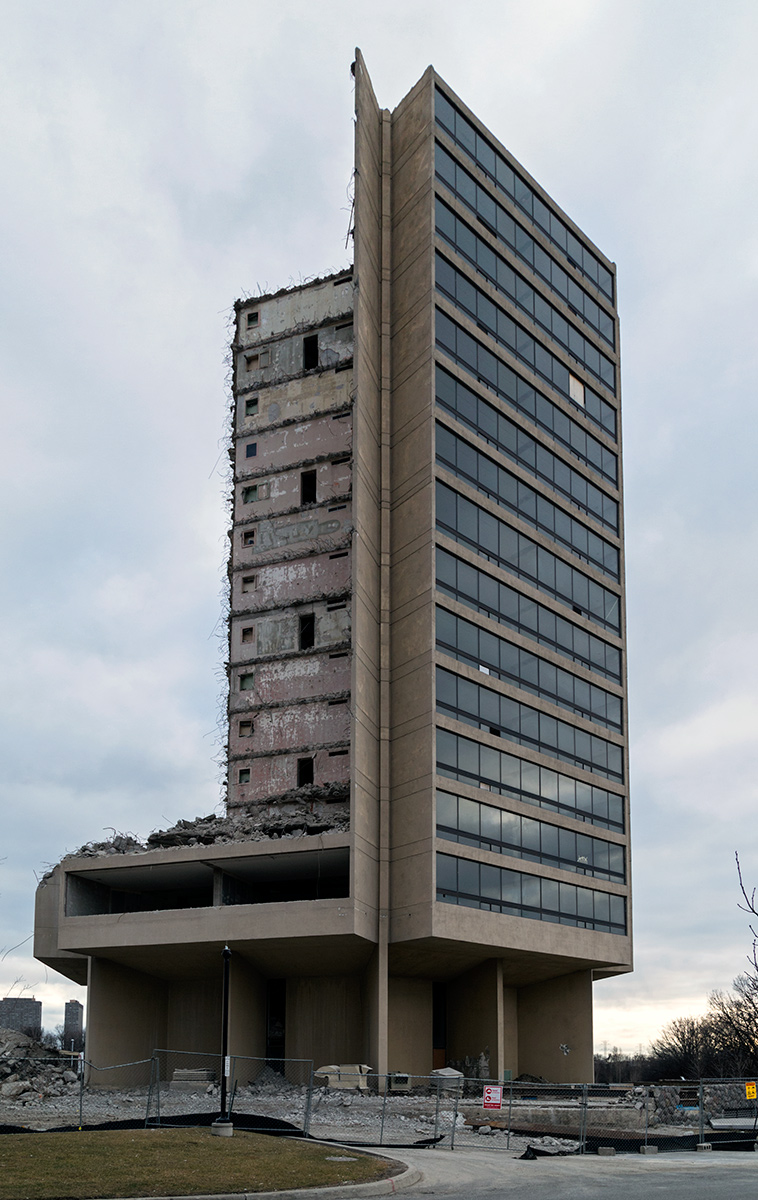 According to the Progreen Demolition website, this is one of the highest buildings (25 storeys) ever demolished in the GTA. The first Inn on the Park building, a modernist structure by architect Peter Dickinson was demolished in 2006.
According to the Progreen Demolition website, this is one of the highest buildings (25 storeys) ever demolished in the GTA. The first Inn on the Park building, a modernist structure by architect Peter Dickinson was demolished in 2006.
20141228. The sky’s the limit at the Metro Toronto Convention Centre.

20141227. 11:10pm at the top of the Manulife Centre at Bloor and Jarvis.
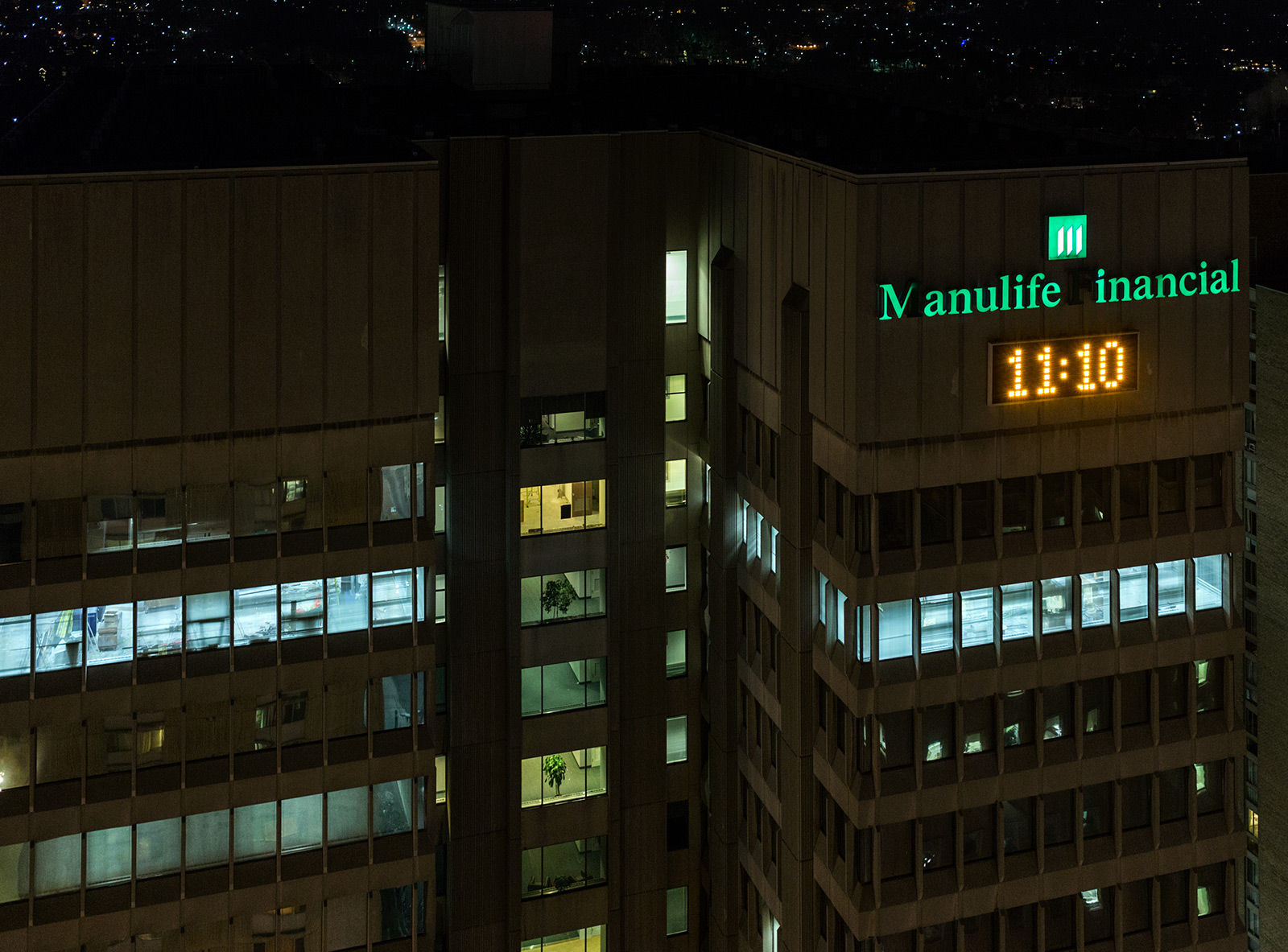
20141226. The world’s highest hydraulic lift lock resides in Peterborough, Ontario on the Trent-Severn Waterway.
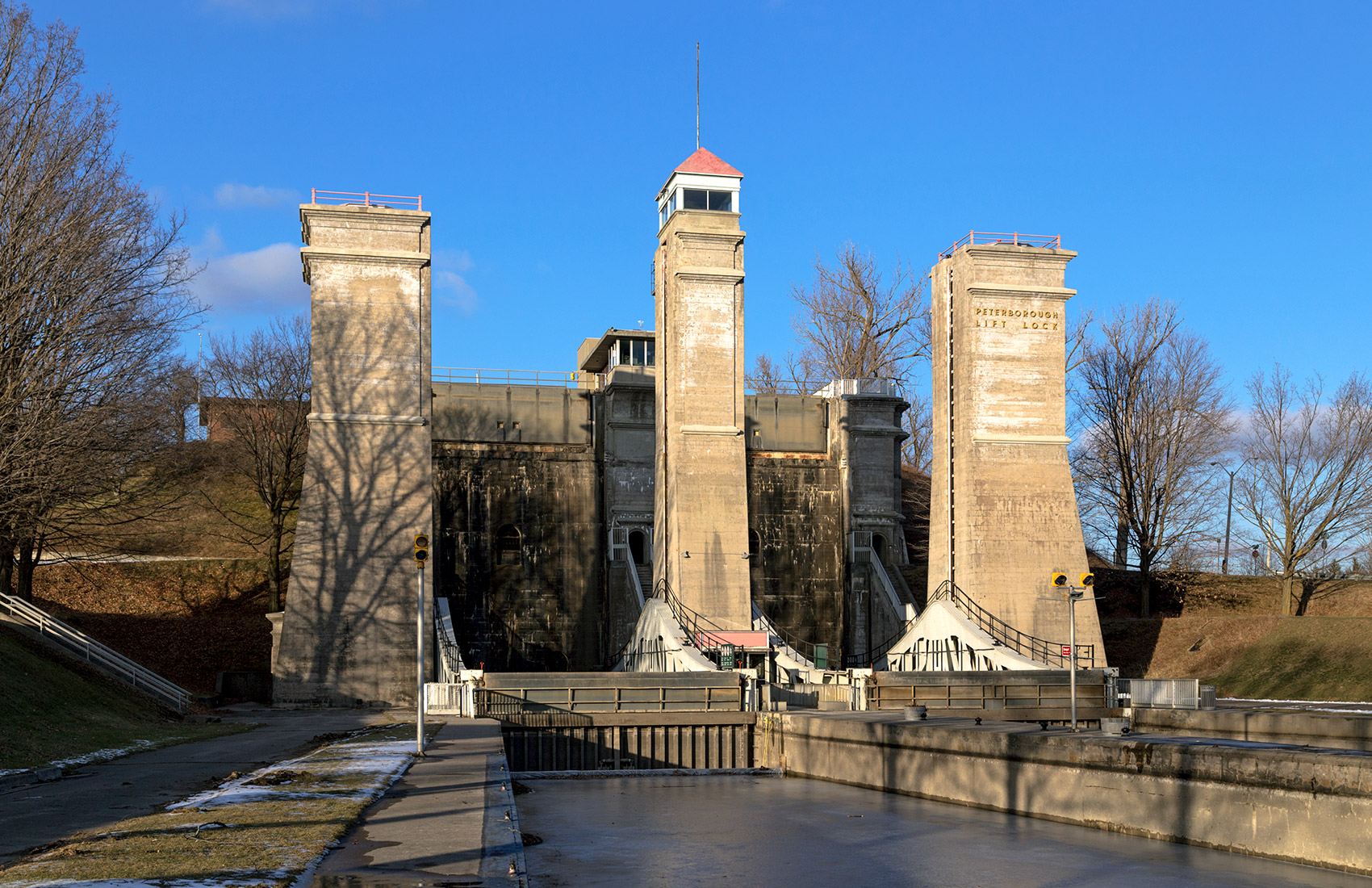 The Peterborough Lift Lock lifts ships 19.8 metres (max 30.5 m long, max 7.3 m wide, max 99,000 kg). The 386 km waterway (with 45 locks and 39 swing bridges and 20 km of man-made channels), is a Canadian National Historic Site and takes 5-7 days to traverse. Construction begain in 1833 and by 1920 a ship could travel from Lake Ontario to Lake Huron. At the time it was built, it was the largest un-reinforced concrete structure on Earth.
The Peterborough Lift Lock lifts ships 19.8 metres (max 30.5 m long, max 7.3 m wide, max 99,000 kg). The 386 km waterway (with 45 locks and 39 swing bridges and 20 km of man-made channels), is a Canadian National Historic Site and takes 5-7 days to traverse. Construction begain in 1833 and by 1920 a ship could travel from Lake Ontario to Lake Huron. At the time it was built, it was the largest un-reinforced concrete structure on Earth.
20141225. The Milne Dam (latest build 1968) on the Rouge River is the seed from which Markham, Ontario sprang.
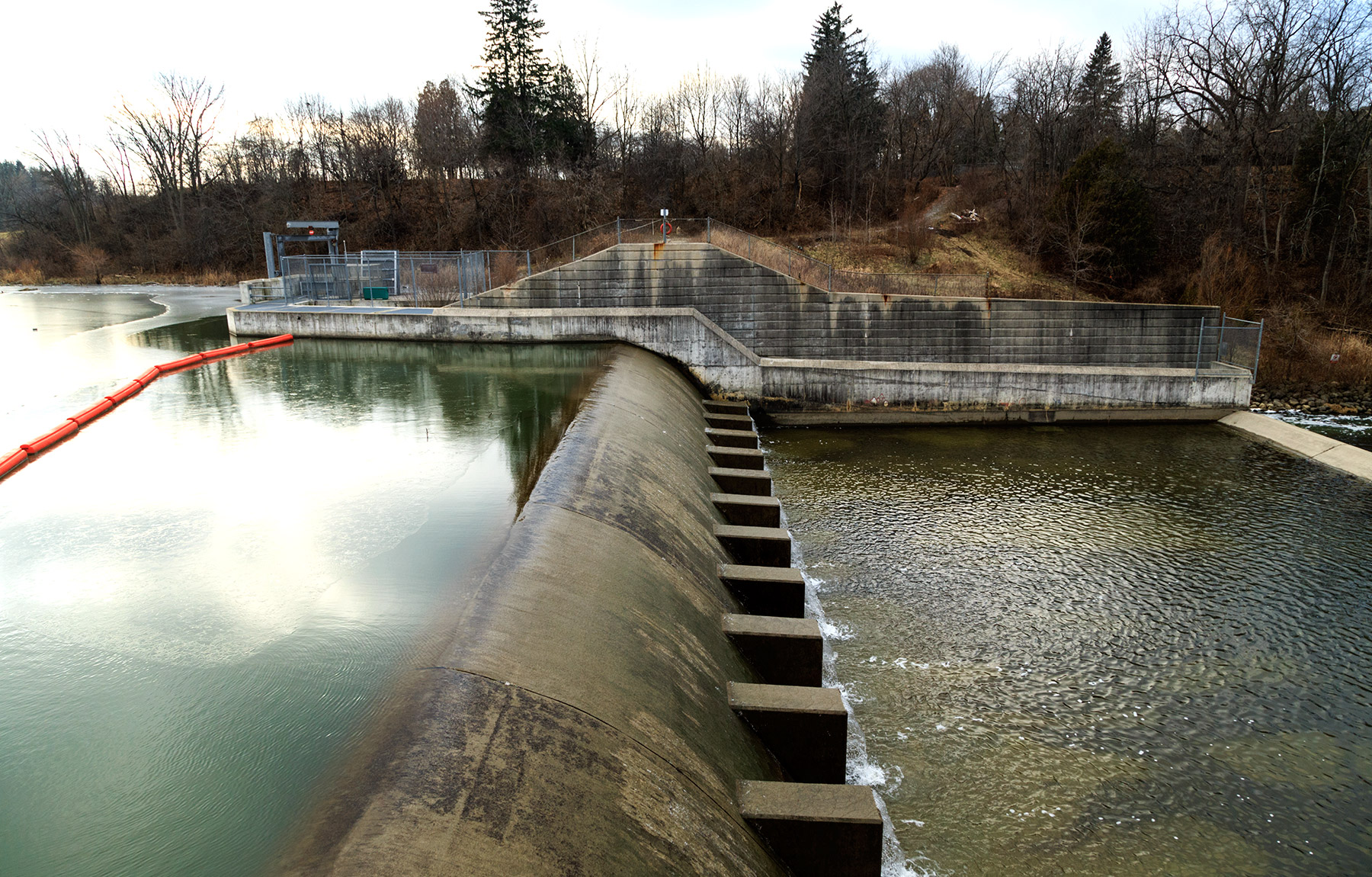
20141224. In a new subdivision in the future downtown Markham, “they are all made out of ticky tacky and they all look just the same.”
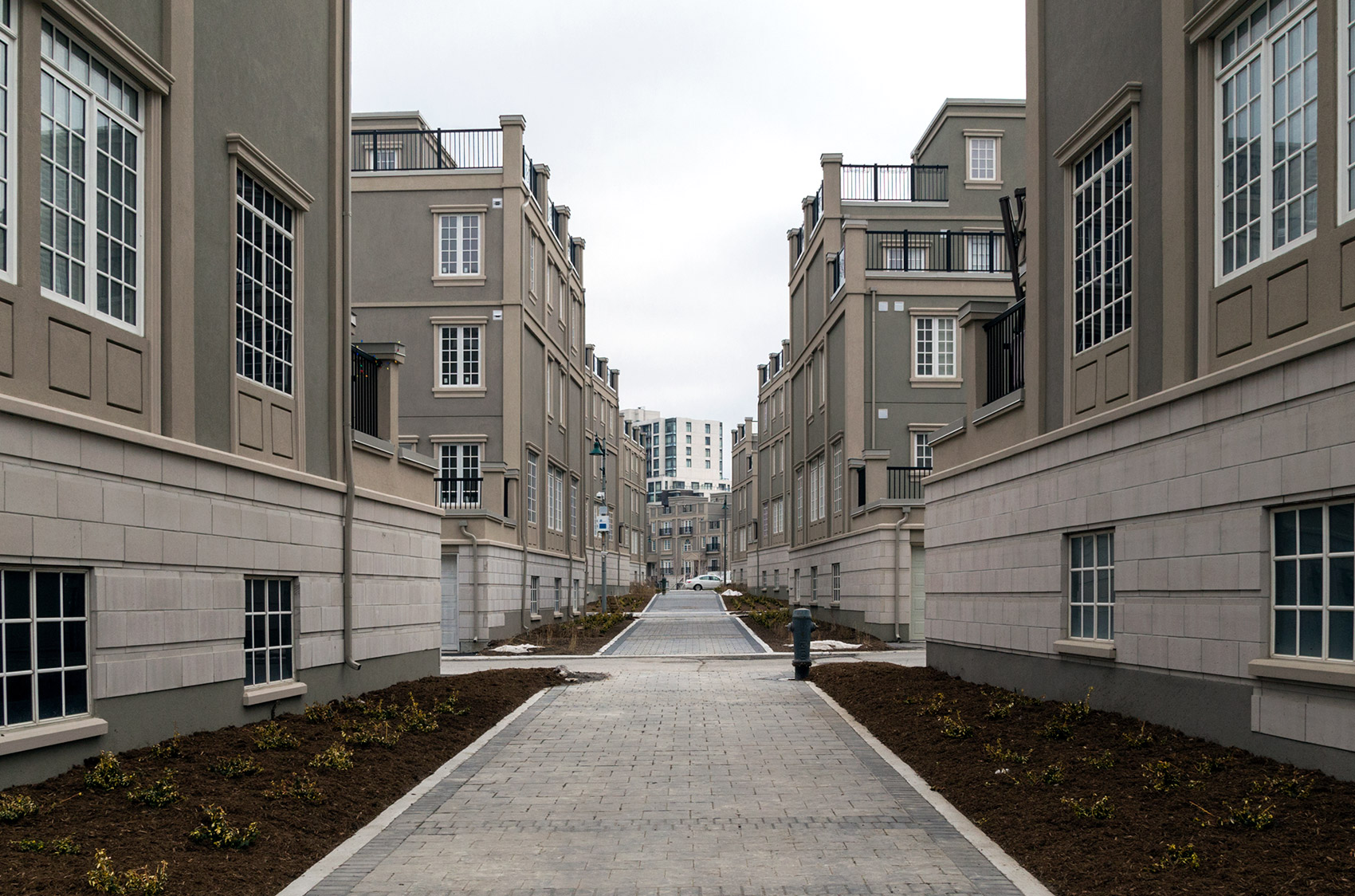
20141223. The Glanmore House (c.1883) in Belleville, Ontario is a fine example of Second Empire architecture and a National Historic Site.
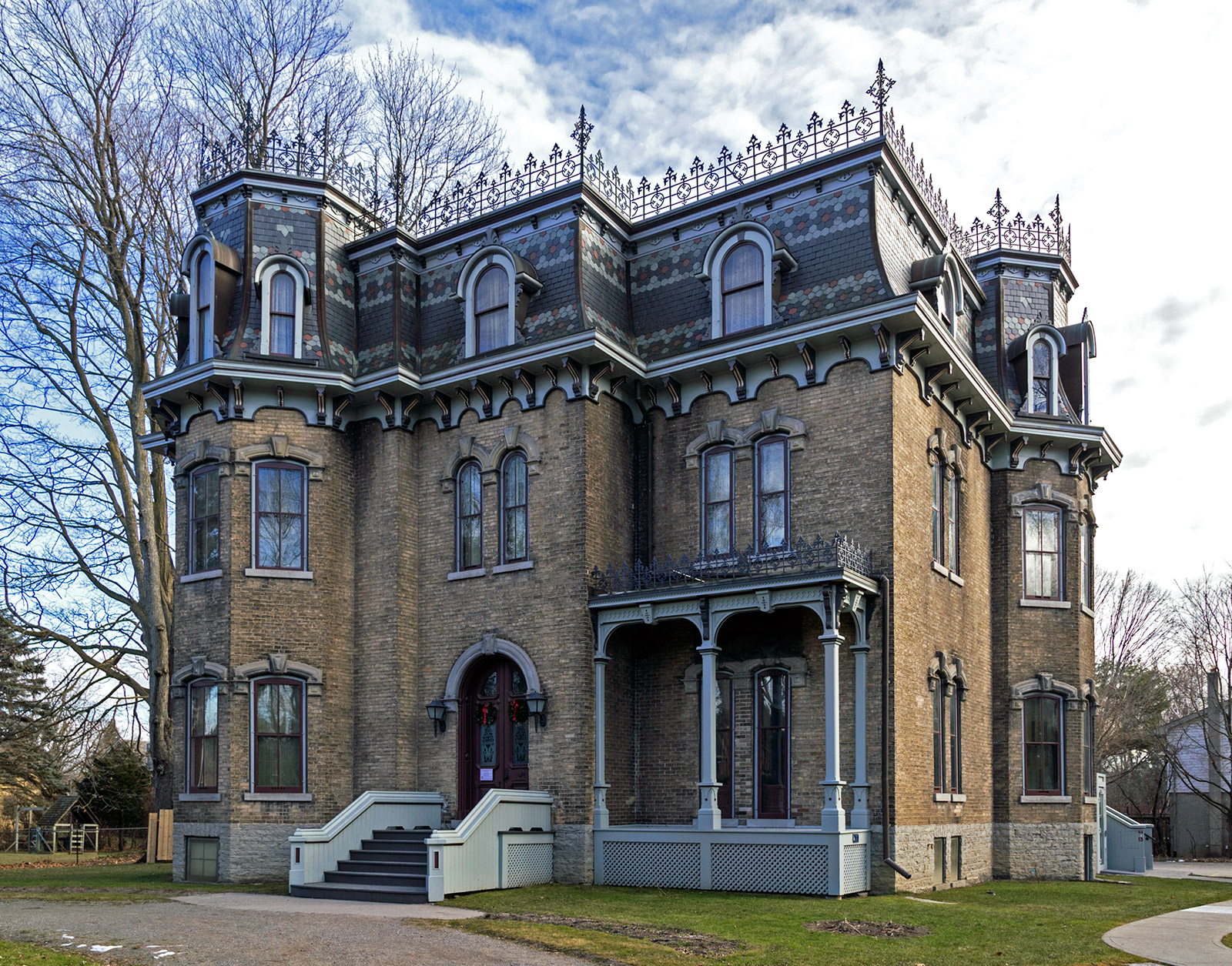
20141222. Belleville, Ontario’s beautiful 1835 Billa Flint House, with its massive parapets and chimneys, awaits another restoration after being seriously vandalized.
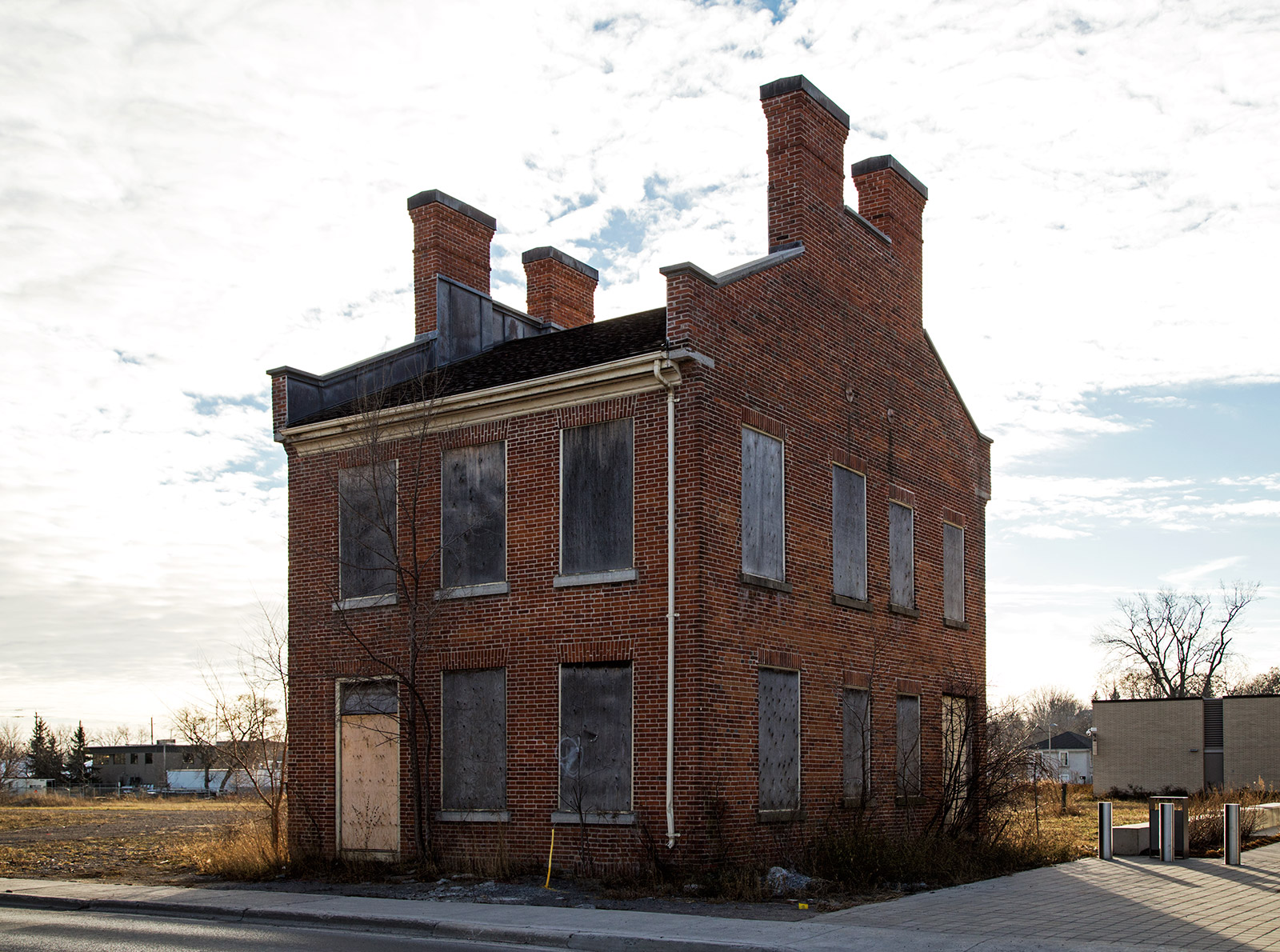
20141221. Belleville’s (Ontario, Canada) beautiful late Victorian Gothic city hall (c.1873) and first heritage asset.
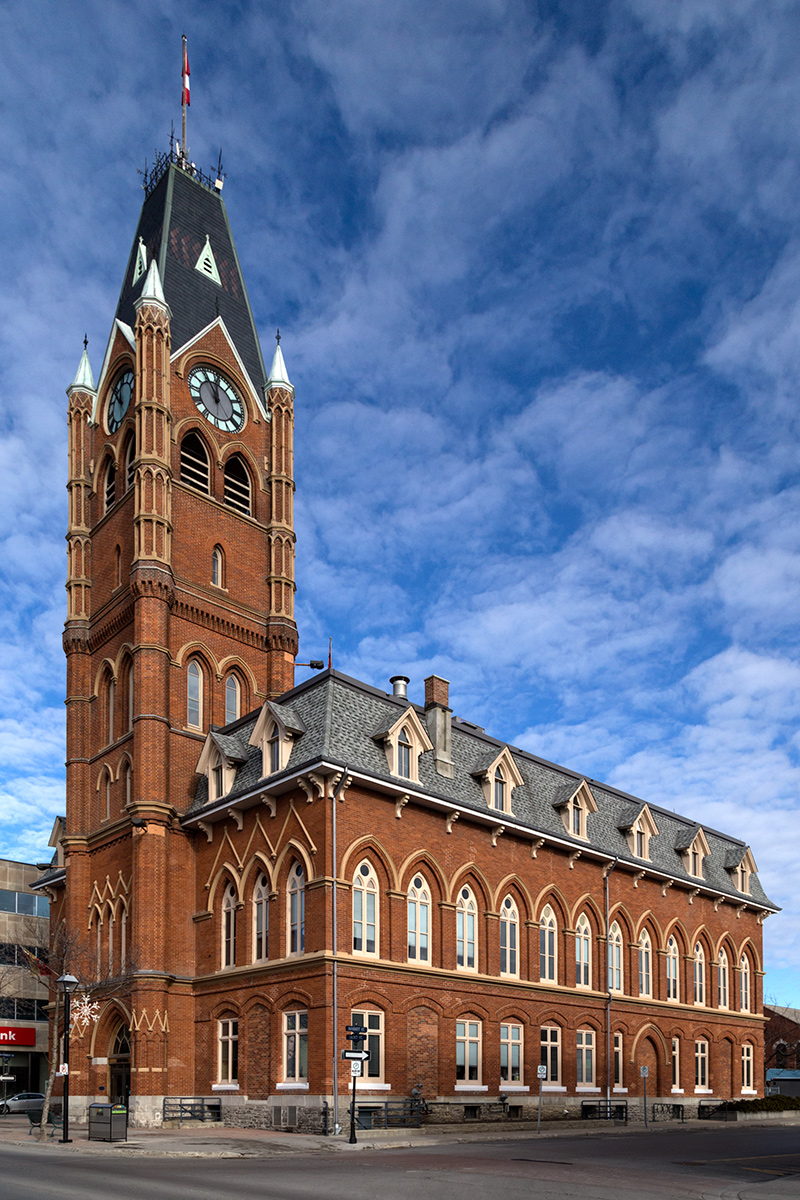
20141220. Sun rays and shadows are almost physical when fog and sunshine combine on Toronto’s waterfront.

20141219. Staring straight down the square stairwell.

20141218. At the new Life Sciences Building at Toronto’s York University, the building matches the ground.
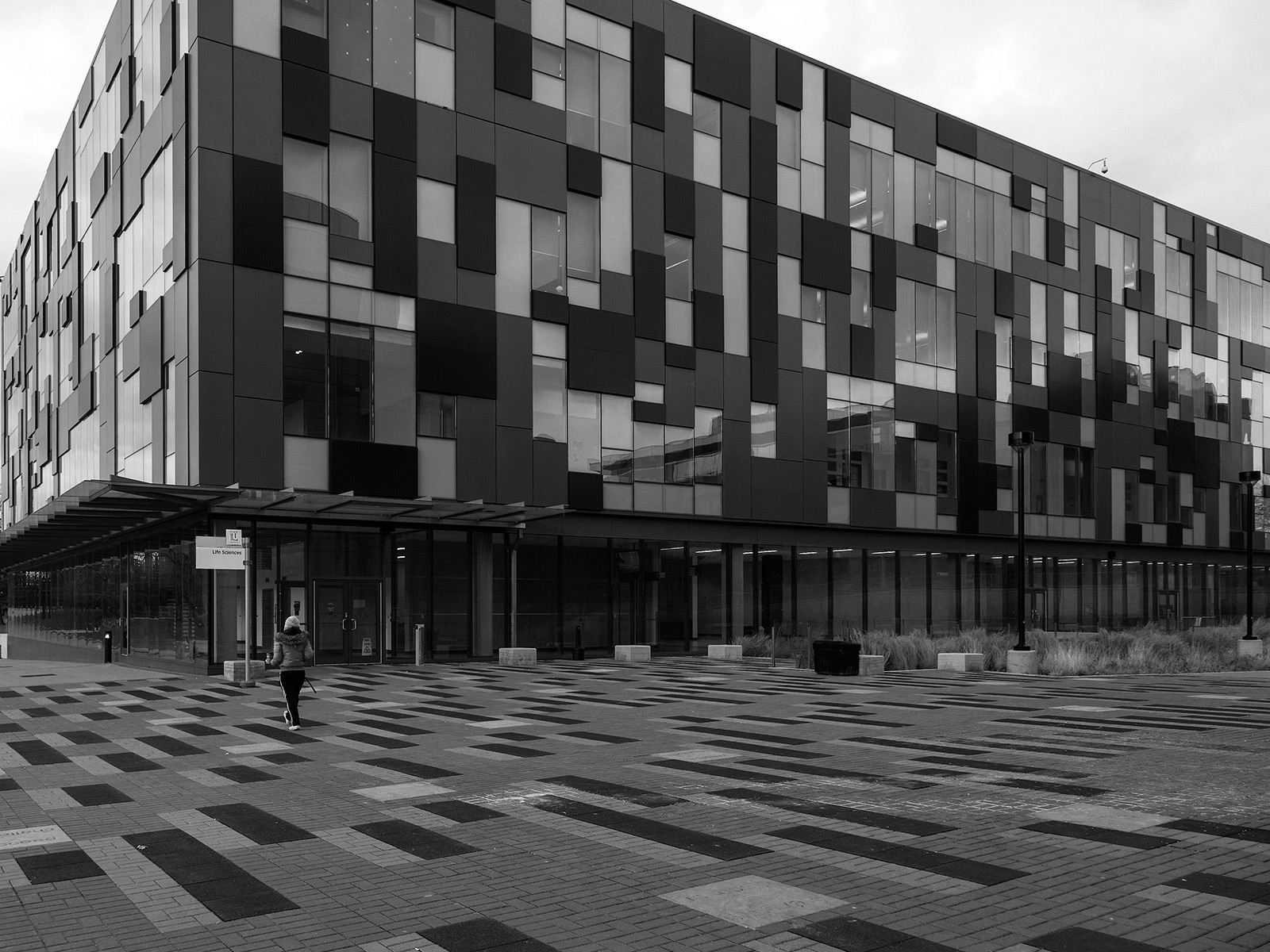
20141217. Repairing the Burlington Bay Skyway heritage bridge (c.1958).
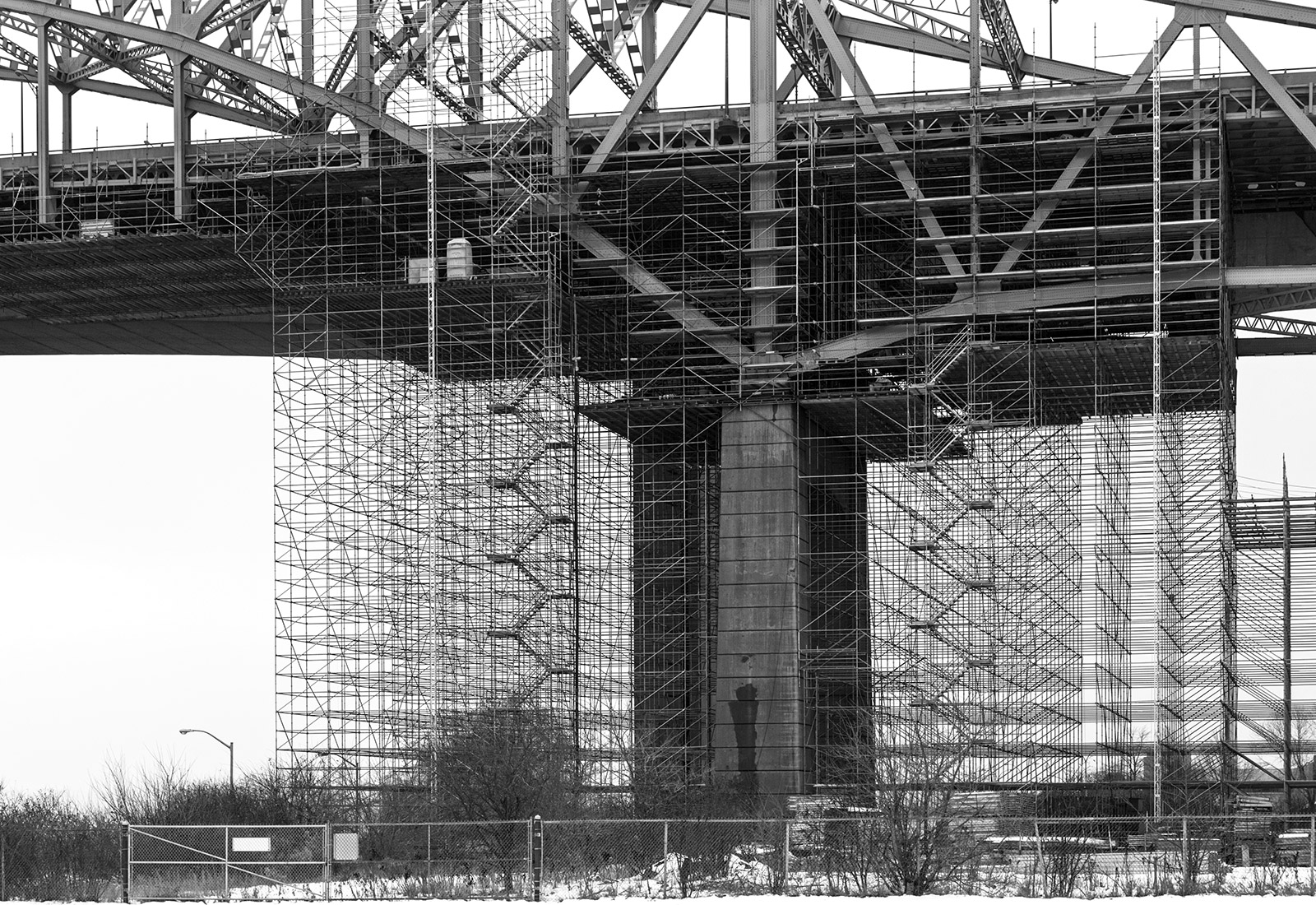
In 1985, a second bridge (behind) was added to double traffic capacity. This second bridge is unimpressive compared to the original and does not compliment it in anyway.
Could you imagine using the portable toilet near the top of the platform rigging on a cold windy day?
20141216. Symmetry straight up a tower of power. Minimal Aesthetic 45.

20141215. The Art Deco Queen’s Quay Terminal (Toronto, built 1927, modified 1983) is Canada’s first poured concrete building.
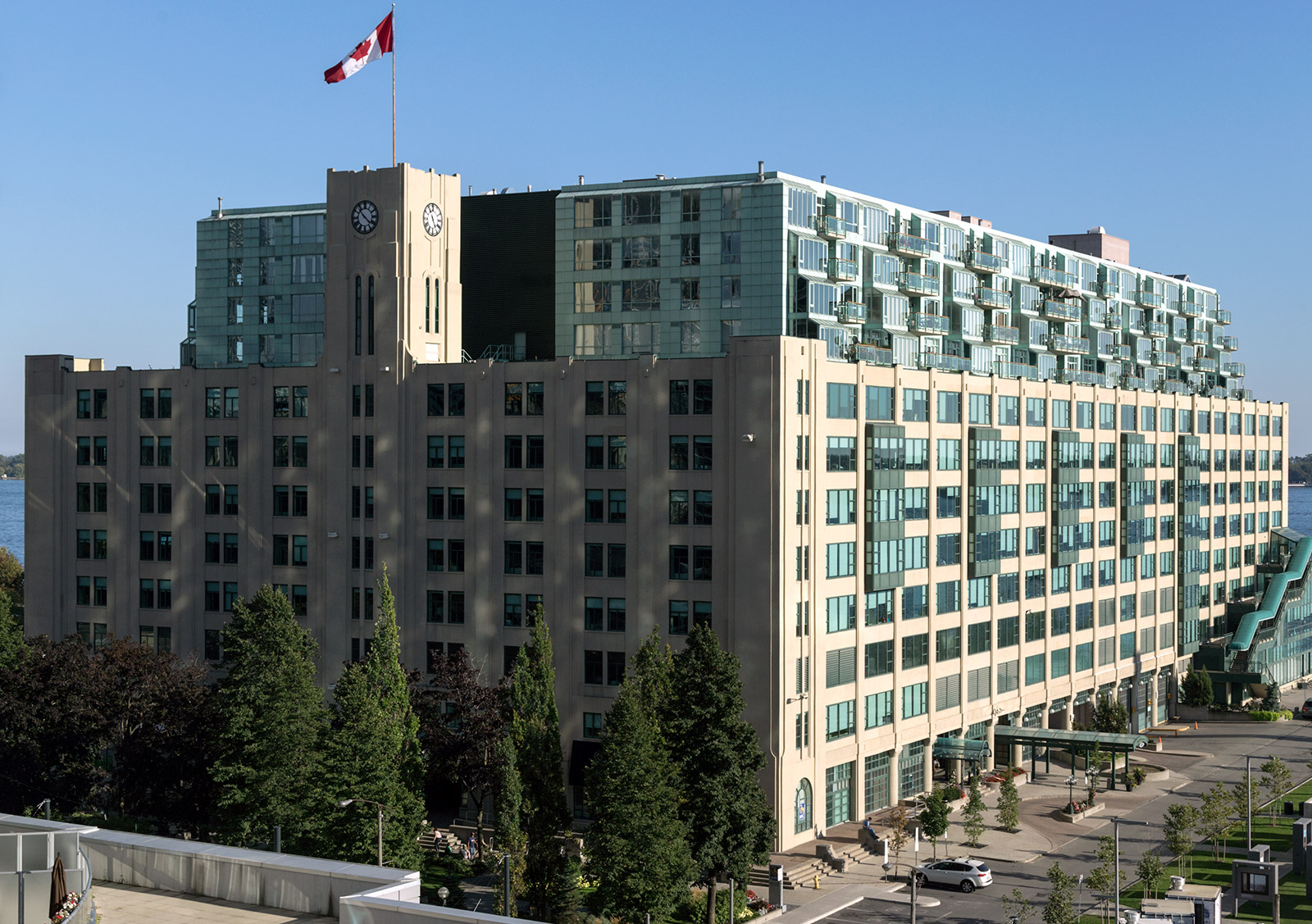
20141214. The amazing yellow and green Art Moderne National Steel Car gatehouse in Hamilton.
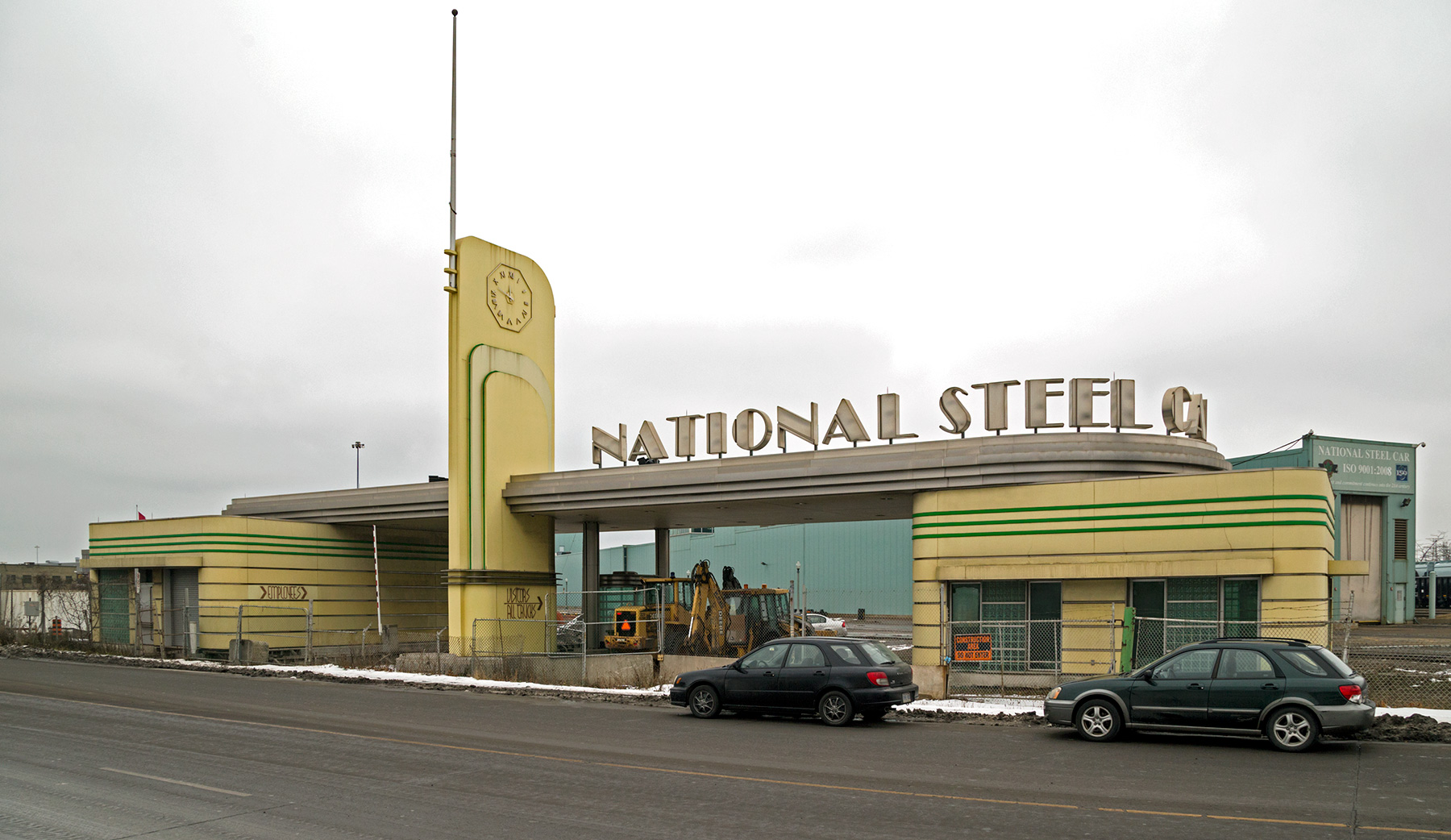
20141213. The Hamilton GO Centre (c.1933) is possibly the only example of Art Deco station architecture in Canada.
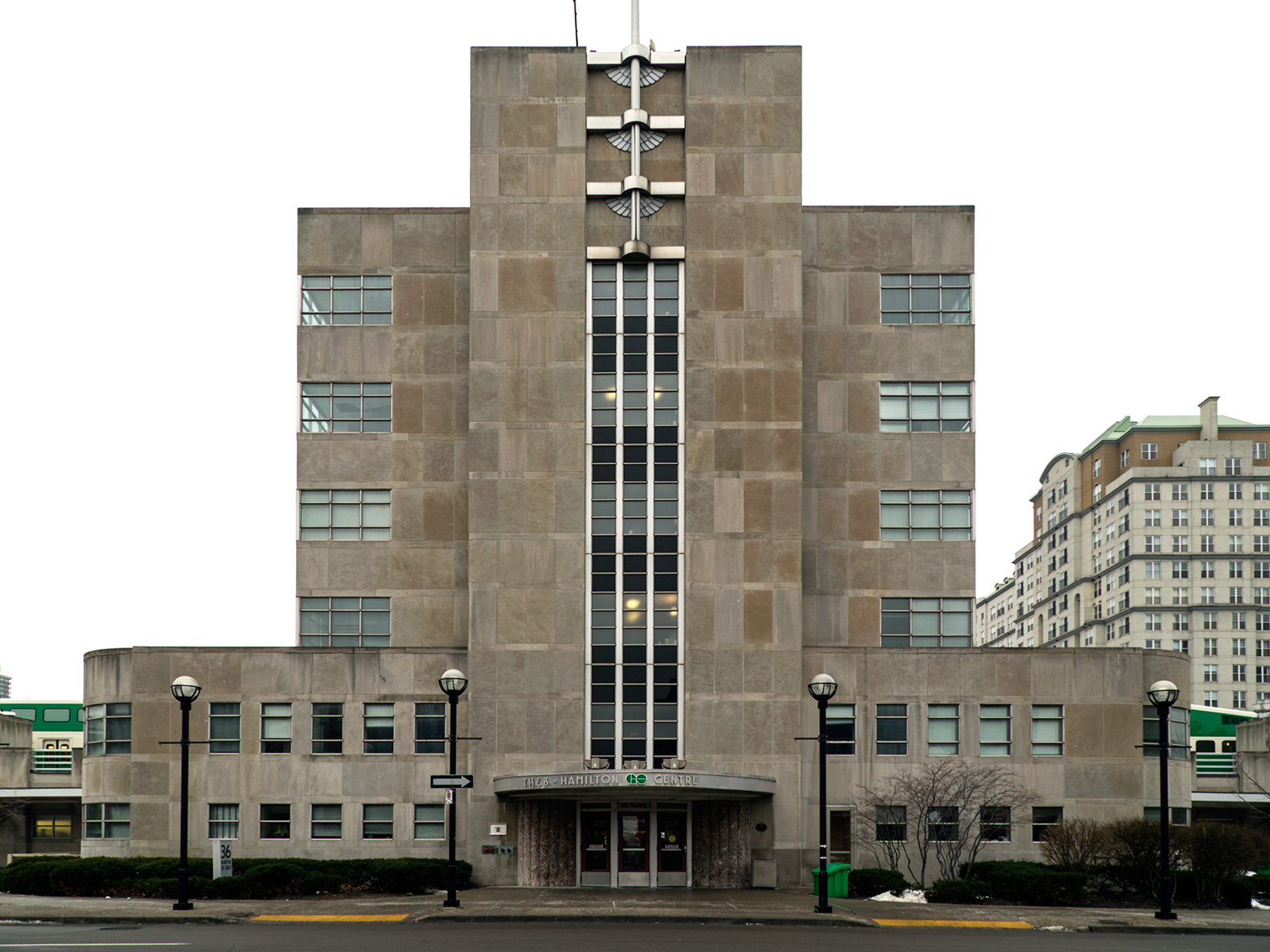
20141212. The Centre of Excellence (c.2012) at York University’s Glendon Campus in Toronto is a true glass box.
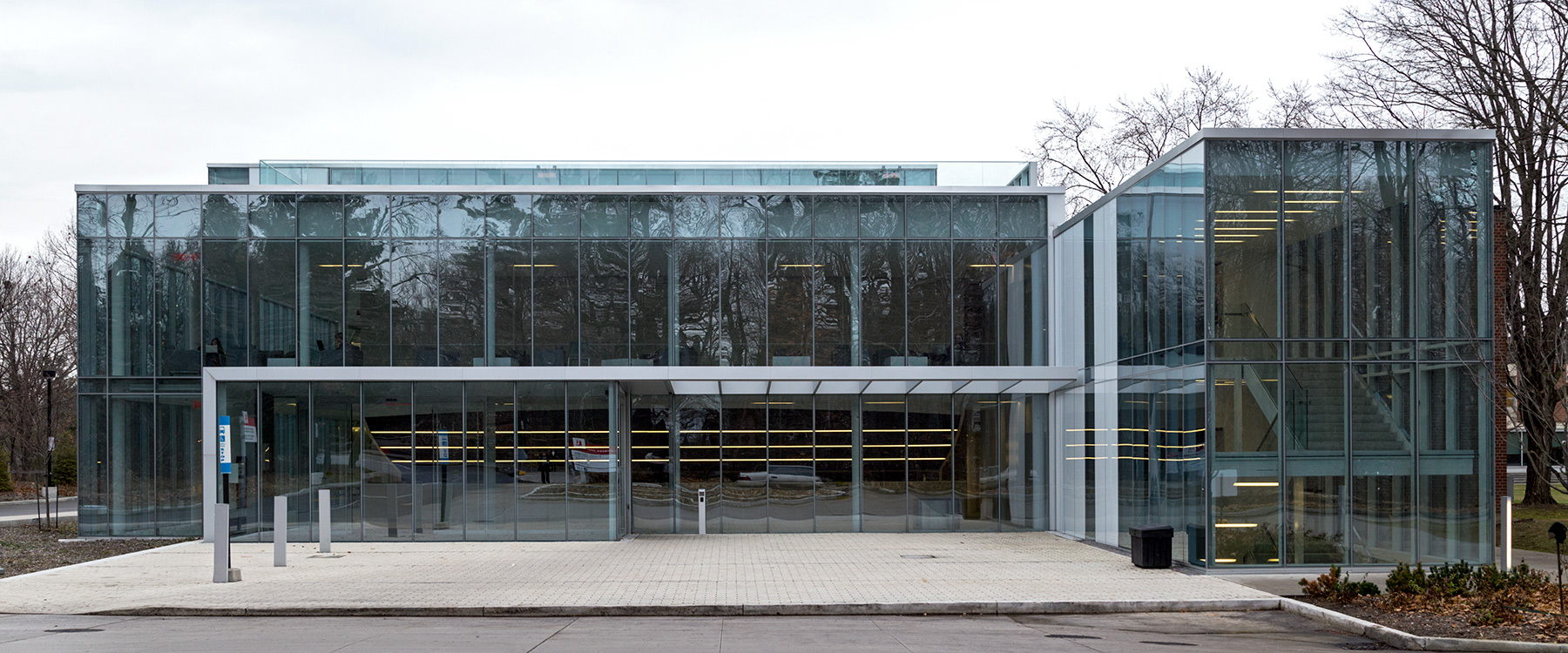
20141211. The grand modernist entrance to Hilliard Residence at York University’s Glendon Campus in Toronto (c.1966).
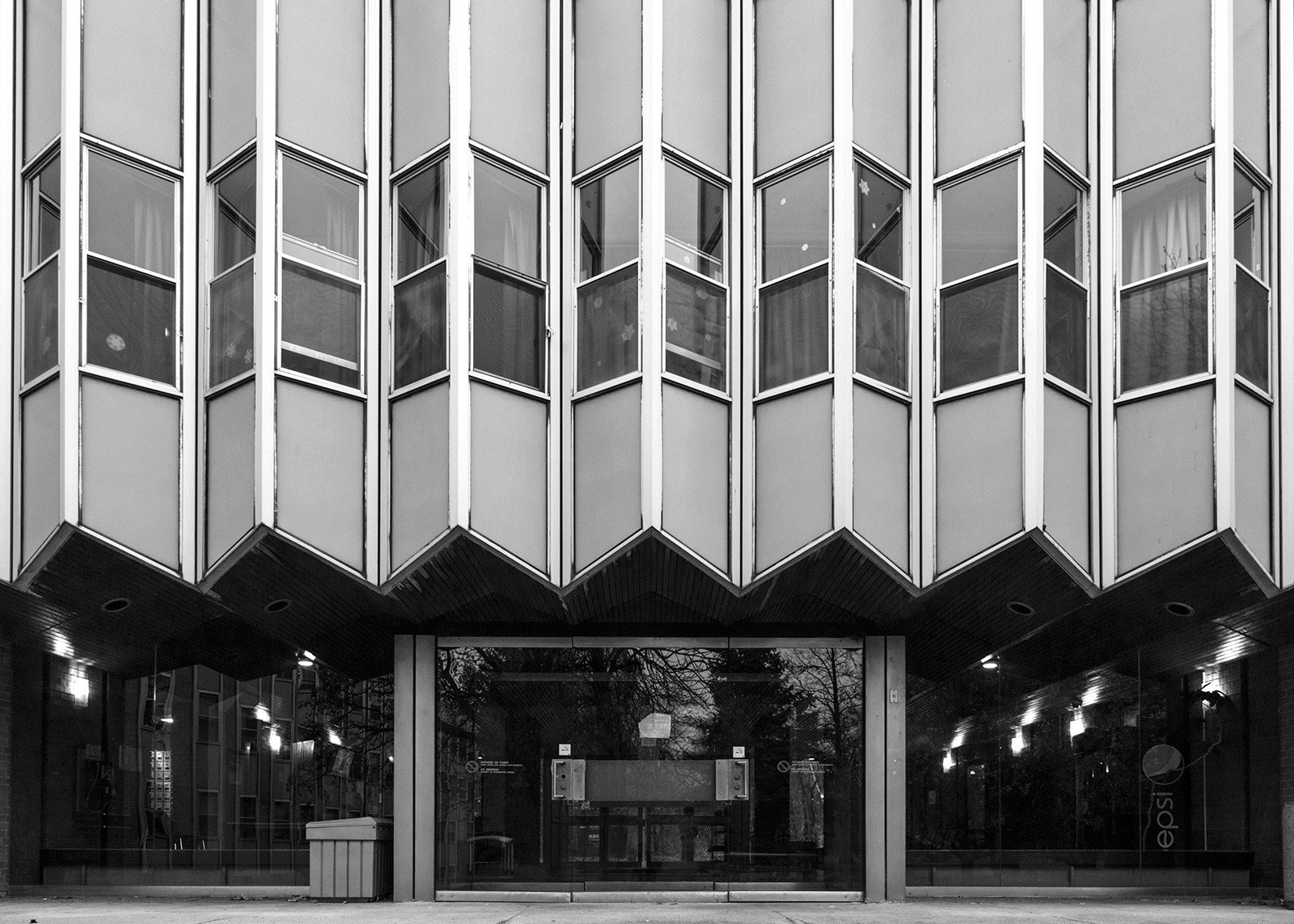
20141210. The Fort York Visitor Centre emerges from the ground connecting the city to Garrison Common park.
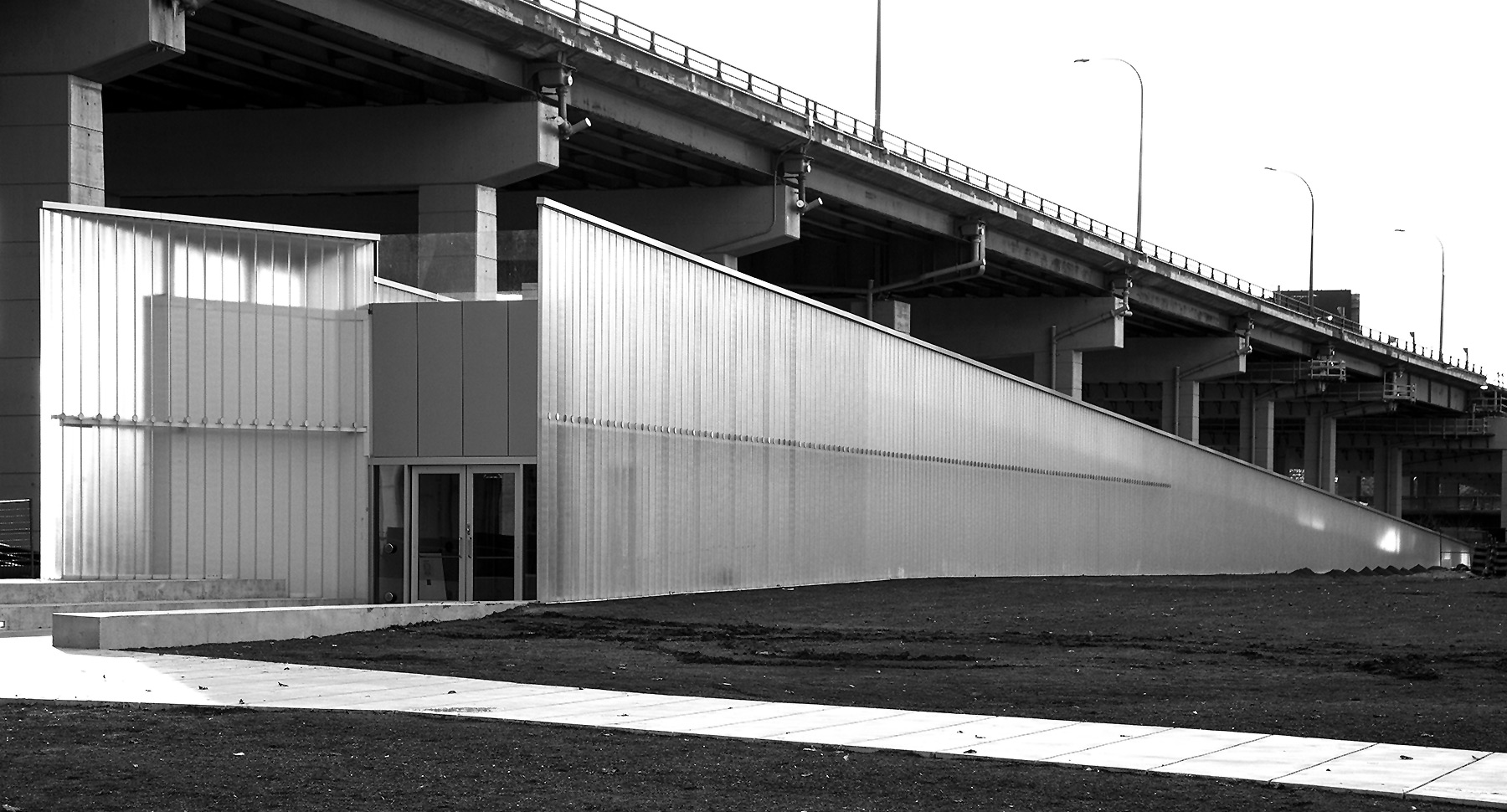
20141209. The 2nd half of a long switchback slope at Fort York’s new Visitor Centre in Toronto will become a multi-media time tunnel.
Patkau Architects Inc. / Kearns Mancini Architects Inc.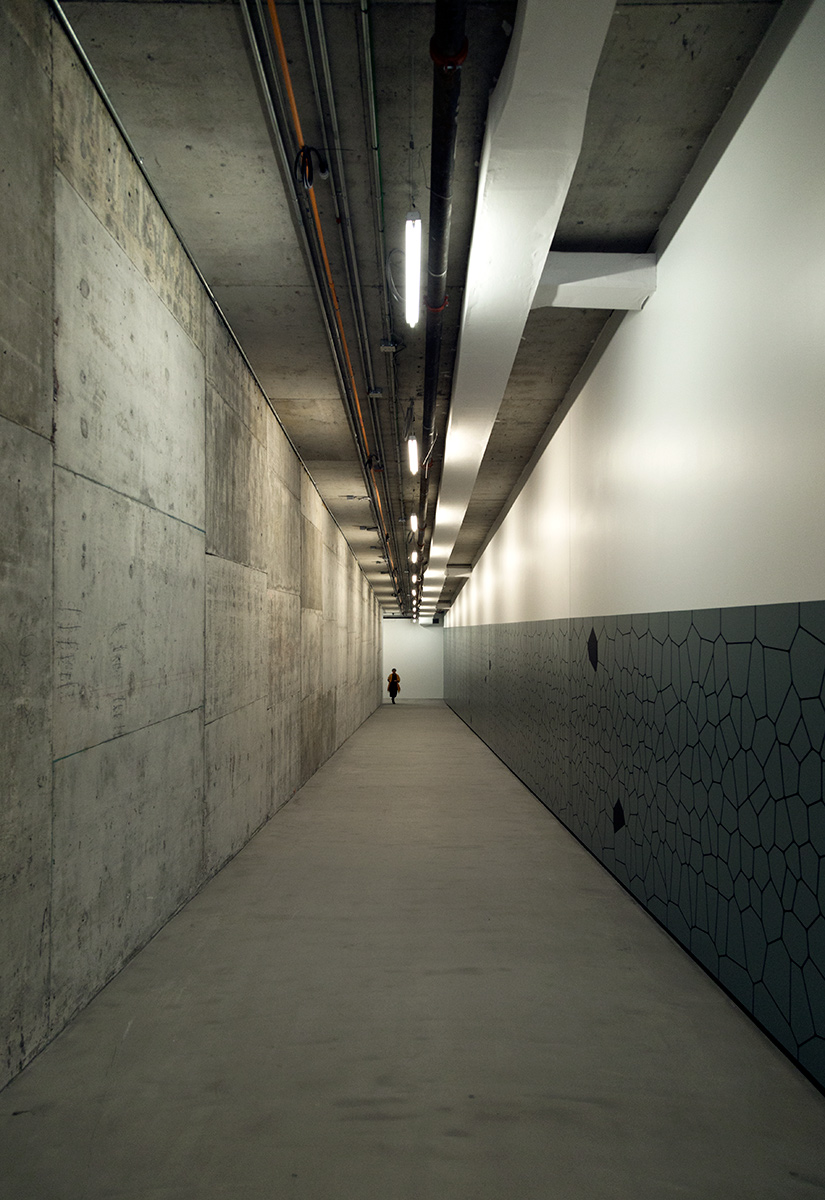
20141208. The Delta Toronto hotel podium projects forward while its tower rises from the rear.
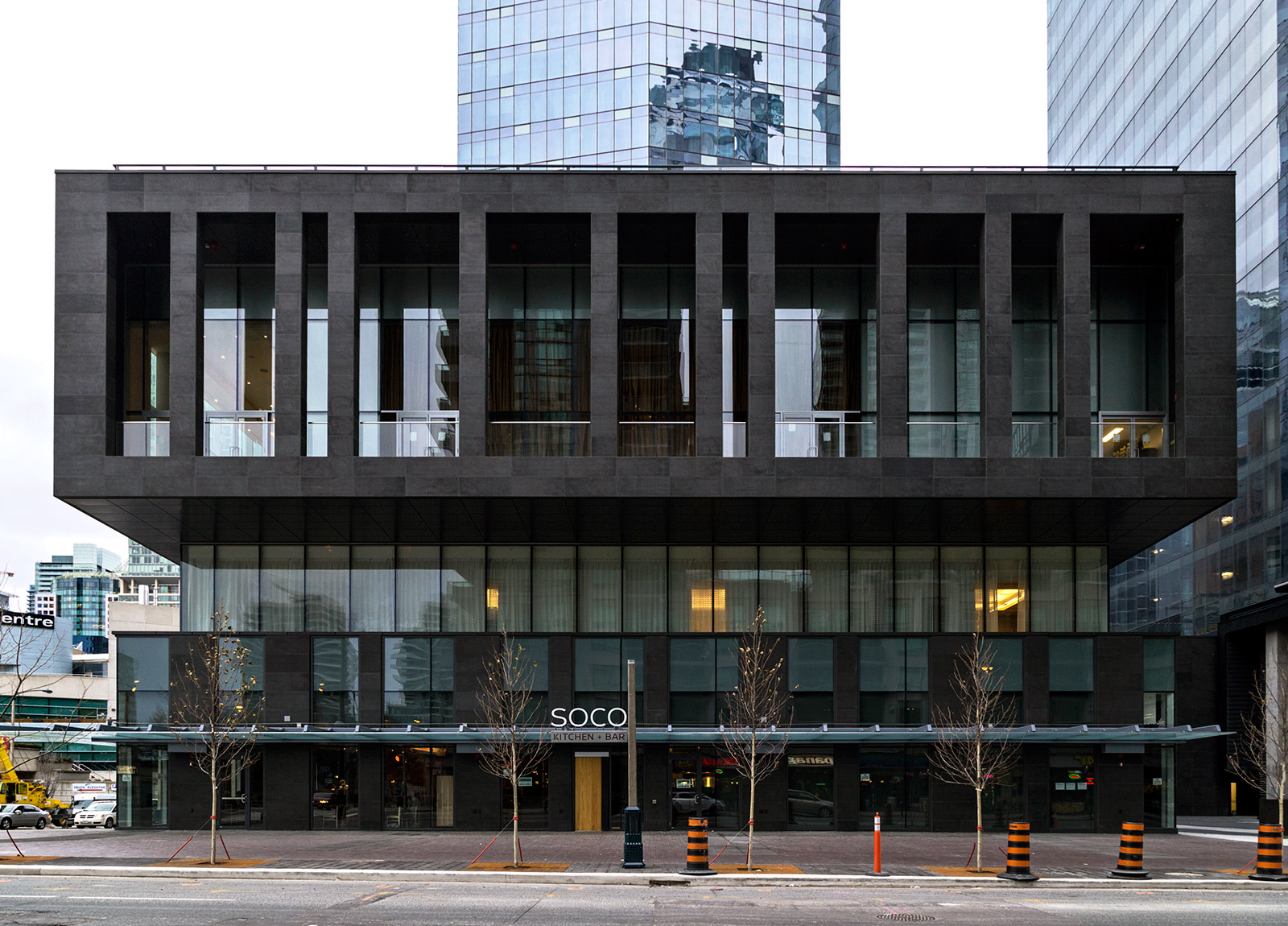
20141207. The entrance to York University’s colossal brutalist Ross Humanities and Social Sciences Building in Toronto.
